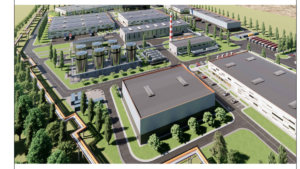
Finnish Finance Minister Riitta Puurta has presented a draft budget for 2026 that proposes abolishing integration compensation paid to municipalities and social services for accepting asylum seekers and refugees, Yle reports.
It is noted that as part of the integration compensation, the state compensates municipalities for expenses related to the integration of immigrants. The most important of these services are language training and employment assistance, but they also include, for example, training courses that introduce people to Finnish society and customs.
The abolition of integration benefits will particularly affect those who have fled the war in Ukraine, said Sonya Hämäläinen, Director of Immigration at the Ministry of Employment and the Economy.
According to her, most users of integration services are asylum seekers and refugees.
Currently, most of them are Ukrainians who have applied for temporary protection. Their number is estimated at around 46,000. This year, about two-thirds of the funds spent on integration services will go to services for people arriving from Ukraine, and next year, according to estimates, three-quarters.
The amount of compensation paid by the state for the integration of refugees has increased dramatically. Before the Russian invasion in 2022, compensation payments amounted to $50-60 million per year, and now they exceed $150 million.
At the same time, municipalities have a legal responsibility for the integration of immigrants. This responsibility does not end even after compensation payments cease, according to Mikko Harkonen, Director of Viability at the Association of Finnish Local and Regional Authorities.
“Someone has to take care of integration, and then the municipality will have to use other means to provide these services.
Therefore, services must be financed, for example, by increasing municipal taxes or reducing other services. It may also be necessary to reduce the scope of integration services. Even now, compensation is insufficient to fully finance these services,” he stressed.
The draft budget will be discussed at government budget talks in the fall, after which the government will present its draft budget for next year. The final decision on the budget will be made by parliament.

The National Bank of Ukraine fined Industrialbank 400,000 hryvnia and six non-bank financial institutions for violating currency legislation in July 2025 for violating legislation in the field of preventing and combating the legalization (laundering) of proceeds from crime, financing terrorism, and financing the proliferation of weapons of mass destruction (AML/CFT). In July 2025, the NBU fined Industrialbank UAH 400,000 and six non-bank financial institutions, and issued a warning to Ukrposhta.
As noted in a release on the central bank’s website, the largest fine—UAH 9,632,850—was imposed on Lineura Ukraine LLC (TM Credit 7), which ranked sixth among non-bank financial institutions in the market with income from financial services of UAH 470.7 million in the first quarter of this year.
The fine imposed on FC Mare LLC amounted to UAH 595 thousand, and on FC Midl LLC, which recently had its license revoked by the National Bank, UAH 340 thousand.
In addition, ProfitGuide LLC was fined UAH 170,000, and Miloan LLC was fined UAH 51,000.
As for Ukrposhta, it received a written warning for violating requirements regarding the improper development and implementation of internal documents in the field of AML/CFT, as well as the lack of procedures sufficient to ensure effective risk management.
As reported on Friday by Forbes Ukraine, the National Bank notified the government of the need to recapitalize Ukrposhta by approximately UAH 820 million, without which the national postal operator will not only be unable to launch a postal bank, but may also lose its license to provide financial services.

On August 8, the municipal enterprise Kyivpastrans announced a tender for compulsory motor third-party liability insurance for owners of land vehicles (OSAGO) of categories D1, D2, 1,145 units.
According to the Prozorro electronic public procurement system, the expected cost of the services is UAH 25.054 million.
Applications for participation in the tender will be accepted until August 18.

Passenger traffic across the Ukrainian border during the week of August 2-8 increased by 1.6% to 778,000, setting a new record for wartime: last year, the highest passenger traffic was also recorded in August, but amounted to 737,000.
According to data from the State Border Service on Facebook, the outbound flow in the tenth week of summer increased from 367,000 to 376,000, while the inbound flow increased from 399,000 to 401,000.
Last weekend, 123,000-129,000 border crossings were recorded daily, and this Saturday, 120,000.
The number of vehicles that passed through checkpoints this week increased from 141,000 to 142,000, while the flow of vehicles carrying humanitarian cargo decreased slightly from 538 to 570.
“With the start of the summer season, passenger traffic through the checkpoints in the Lviv region has increased by 40%, and on weekends the load increases even more – by an average of 16% compared to weekdays,” the Western Regional Administration of the State Border Service said in a statement.
According to the report, the busiest checkpoints are Krakivets, Shehyni, and Ustyluh, with average traffic recorded at Hrushev, Uhryniv, and Rava-Ruska, while the least busy are Smilnytsia and Nizhankovychi.
This Sunday, as of 12:00, according to the State Border Service, the longest queue of 60 cars was at the Ustyluh checkpoint on the Polish border. Thirty-five cars were waiting to cross the border at the Hrushev checkpoint, 30 at the Uhryniv checkpoint, 25 at the Krakivets checkpoint, and 10 at the Shehyni checkpoint.
On the border with Hungary, the longest queue of 30 cars was at the Luzhanka crossing, while at the Vilok and Dzvinkovo checkpoints there were 20 cars each, at Kosino there were 15, and at Tisa there were 5.
At the border with Slovakia, 35 and 25 cars were waiting for inspection at the Uzhgorod and Maly Berezny checkpoints, respectively, and at the border with Romania, there were queues of 60 cars at the Porubne checkpoint and 15 at the Dyakovo checkpoint.
The total number of people crossing the border this year is 5.7% higher than last year: during the same seven days last year, 356,000 people left Ukraine and 380,000 entered, and the flow of cars was also lower – 137,000.
As reported, from May 10, 2022, the outflow of refugees from Ukraine, which began with the start of the war, was replaced by an influx that continued until September 23, 2022, and amounted to 409,000 people. However, since the end of September, possibly influenced by news of mobilization in Russia and “pseudo-referendums” in the occupied territories, followed by massive shelling of energy infrastructure, the number of people leaving exceeded the number entering. In total, from the end of September 2022 to the first anniversary of the full-scale war, it reached 223,000 people.
During the second year of the full-scale war, the number of border crossings out of Ukraine exceeded the number of crossings into the country by 25,000, according to the State Border Service, by 187,000 in the third year, and by 128,000 since the beginning of the fourth year, of which 108,000 were seasonal since the beginning of summer.
As Deputy Minister of Economy Serhiy Sobolev noted in early March 2023, the return of every 100,000 Ukrainians home results in a 0.5% increase in GDP.
In its July inflation report, the National Bank worsened its migration forecast: while in April it expected a net inflow of 0.2 million people to Ukraine in 2026, it now forecasts a net outflow of 0.2 million, which corresponds to the estimate of the net outflow this year. “Net returns will only begin in 2027 (about 0.1 million people, compared to 0.5 million in the previous forecast),” the NBU added. In absolute terms, the National Bank estimates the number of migrants currently remaining abroad at about 5.8 million.
According to updated UNHCR data, the number of Ukrainian refugees in Europe as of July 31, 2025, was estimated at 5.115 million (5.083 million as of July 1), and 5.676 million worldwide (5.643 million).
In Ukraine itself, according to the latest UN data for April this year, there were 3.757 million internally displaced persons (IDPs), compared to 3.669 million at the end of last year.

Bio Thermo Pack LLC (Khmelnytskyi region), which specializes in the production of paper and cardboard, has become a member of the Teofopil Eco Park industrial park (Teofopil village, Khmelnytskyi region), according to the Ministry of Economy.
According to the ministry, it received a corresponding notification from the industrial park’s management company, Teo Green Invest LLC, which, according to opendatabot, is part of the Ukraine 2001 group of agricultural companies, whose president and ultimate beneficiary is entrepreneur Vadym Leivi.
Bio Termo Pak LLC was established in March 2025 with a registered capital of UAH 100,000. Its activities include the production of paper pulp, corrugated cardboard and paper, paper and cardboard packaging.
The Teofopil Eco Park industrial park was registered in December 2024 and covers an area of 30.87 hectares.
According to the Ministry of Economy, the total investment in the construction of facilities on its territory is estimated at approximately UAH 2.43 billion, with plans to create 1,550 jobs in the paper and related processing industries.
In addition to the production of paper and cardboard products, the IP concept provides for the production of biogas and bioethanol, bioplastics, as well as the food industry and alternative energy.
The initiative to create the industrial park was launched by the Teofopilskaya village council.
The park is located next to the Teofipol Energy Company and the Teofipol Sugar Factory, whose ultimate beneficiary is also Levey.
According to opendatabot, Ukraine 2001 LLC received UAH 4.88 billion in net income and more than UAH 2 billion in net profit in 2024.

Ferrexpo plc, a mining company with its main assets in Ukraine, delivered 60% of its iron ore raw materials (IORM) by sea in January-June 2025, 35% by rail, and 5% by river barges.
According to the company’s interim report on Wednesday, the group continued to take advantage of its access to Ukrainian Black Sea ports to export products by sea to Asia, the Middle East, and North Africa, as well as Europe, which prefer sea transport over rail or river barges. A total of 60% of sales were exported by sea during this period, compared with 53% in the previous six months and 47% in the same period of 2024.
It is reported that a total of 16 vessels were loaded with Ferrexpo products from Ukrainian ports during the half-year. Of the total sales, 50% went to Asian customers, 38% to European customers, and the remaining 12% to customers in the Middle East and North Africa.
Overall, seaborne sales remained stable at 2.1 million tons. Sales volumes increased compared to previous half-years, although they remained unchanged compared to the same period in 2024.
However, the Fe (65%) iron ore index declined by 10% during this period, resulting in revenue of $453 million, up 18% compared to the previous six months and down 17% compared to the same period last year ($549 million), when iron ore prices were significantly higher.
Total sales volume amounted to 3.8 million tons, including pellets and concentrate, which is 28% more than in the second half of 2024, but 1% less than in the first half of 2024.
During the reporting period, the Group reduced its production cost by 2.2% under C1 to $77.1/tonne (in the first half of 2024 – $78.8/tonne) due to reduced mining activities, lower fuel prices, lower maintenance costs, and lower personnel expenses. The main factors affecting C1 costs are electricity, natural gas, and diesel fuel prices. The Group continued to experience sharp increases in electricity prices due to the existing weakness of electricity generation and distribution capacities in Ukraine as a result of ongoing Russian attacks.
It should be noted that the Group’s business is energy-intensive, and the main components of C1 expenses are electricity, gas, and diesel fuel, which together account for 49% (45% in the first half of 2024) of total expenses. In particular, in January-June 2025, the share of electricity costs in C1 costs increased to 34% (first half of 2024 – 27%), and the share of natural gas – to 9% (first half of 2024 – 7%).
The price of iron ore with a 65% benchmark declined during the first half of 2025, closing $11 lower at $104/ton. In July, iron ore prices recovered slightly, with the average price for 65% Fe at $116/tonne in the last week of July, 12% higher than at the beginning of the month.
During the first half of the year, the group operated two of its four pelletizing lines in the first quarter and one line in the second quarter, as well as a specialized concentrate line.
Commenting on the group’s performance, interim CEO Lucio Genovese noted that from January to April 2025, the company was denied VAT refunds of $31.1 million, and by the end of June, this amount had reached $38.3 million.
With the exception of lease obligations, the group has no outstanding loans or borrowings bearing interest, so no interest expenses were incurred on financial lines. The group has minimal financial debt of $2 million.
Ferrexpo owns 100% of Yeristovsky GOK LLC, 99.9% of Bilanovsky GOK LLC, and 100% of Poltava GOK PJSC.